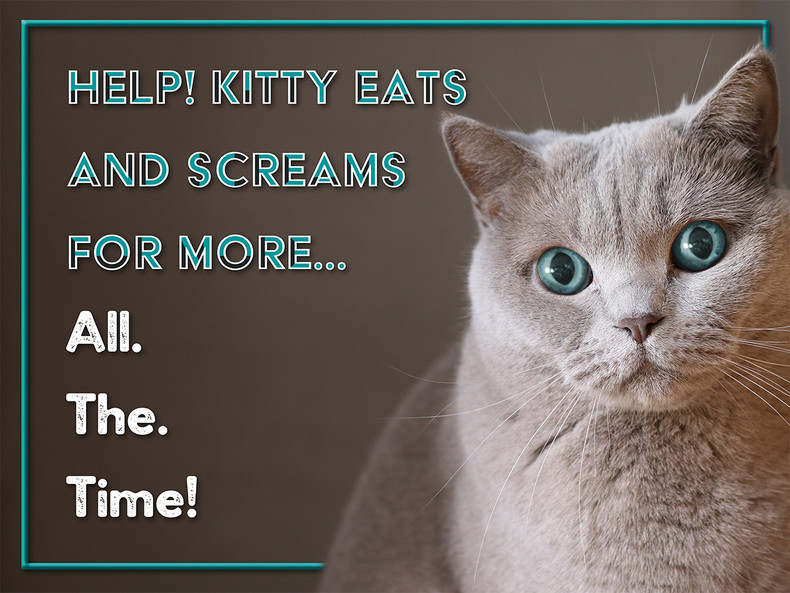Help! Kitty Eats and Screams for More...All. The. Time!
Even with “normal” healthy cats, they hear the food falling into the bowl or the opening of a can and go nuts as if this is NOT the daily routine and they are surprised their poor bodies are finally being provided nourishment. For the diabetic cat, especially if they are newly diagnosed and have lost a lot of weight, literally are starving. This is because insulin acts like a key to get cells to open up and let the sugar in. When there is not enough insulin being produced, the cells remain closed or at least less than fully open, and the cells are not getting their fair share of glucose. Since the glucose is hanging out in the blood instead of being absorbed, this causes high blood sugar. As cats are very good at masking symptoms, it is likely that kitty has suffered at least some ill effects prior to diagnosis. This is not your fault. Cats are programmed to show no weakness, as in the wild, that poses a danger.
So, you have fed kitty and she is yelling and screaming or leading you back to the bowl again and again for sustenance. You have tested, dosed the insulin properly, and given the correct amount of calories. What do you do?
- Slow feeding.
This consists of mixing their wet food with about half water. Give the first half of the food-water mixture
and then give the other half if they cry for more. This will slow down their eating as the cat
will be forced to lap up their food as opposed to gobbling it down as fast as
possible.
- Refrigerate their food. Some cats are not going to be keen on mixing the food with water all the time. I have found that cold food does slow them down a bit as well. This can be used as an intermediary step while getting kitty adjusted to a diabetic friendly diet and weaning them from slow feeding without going so far that they start gobbling their food again.
- Low-carb/no-carb protein treats. Make them work for it! You can make them come to you. Throw the treat so they run after it or find a container they can work to get the treat out from. This is technically another way to slow feed.
- Get 'em high! Catnip toys, if your kitty likes catnip can serve as a distraction. Use catnip as a treat. I have poured a teaspoon’s worth on the floor for my cats for years and they immediately roll around in it like pigs in mud. IF your cat is not a fan of catnip, silver vine and cat grass are alternatives.
- Wear 'em out. Along with the catnip, playing with kitty keeps them active and is a good distraction. If kitty likes to be brushed a lot, do that, as that is a calming thing.
The main thing to remember in this situation is that it will improve. Your fur baby is dealing with the side effects of a disease that while controllable, takes time to get everything running smoothly again. It can be hard on you, but it is not a picnic for them either. As kitty gains back lost weight, gets more active, and gets balanced blood glucose levels, these issue will resolve.
One final tip from personal experience, keep any bagged food or treats in an airtight container that kitty with claws cannot open. I have come home to an open pantry door with the bag of cat treats open and a path leading right to the culprit on many occasions. I have even had a declawed cat that would chew the bottom out of the cat food bag as a rat would just because he could (never minding the full bowl literally two steps away).
It will get better! Chin up! Extra help is available on the Feline Diabetic Support Group on FB if you have questions or have a unique situation.
Next week, I will cover how to handle the multi-cat household when only one is diabetic.

